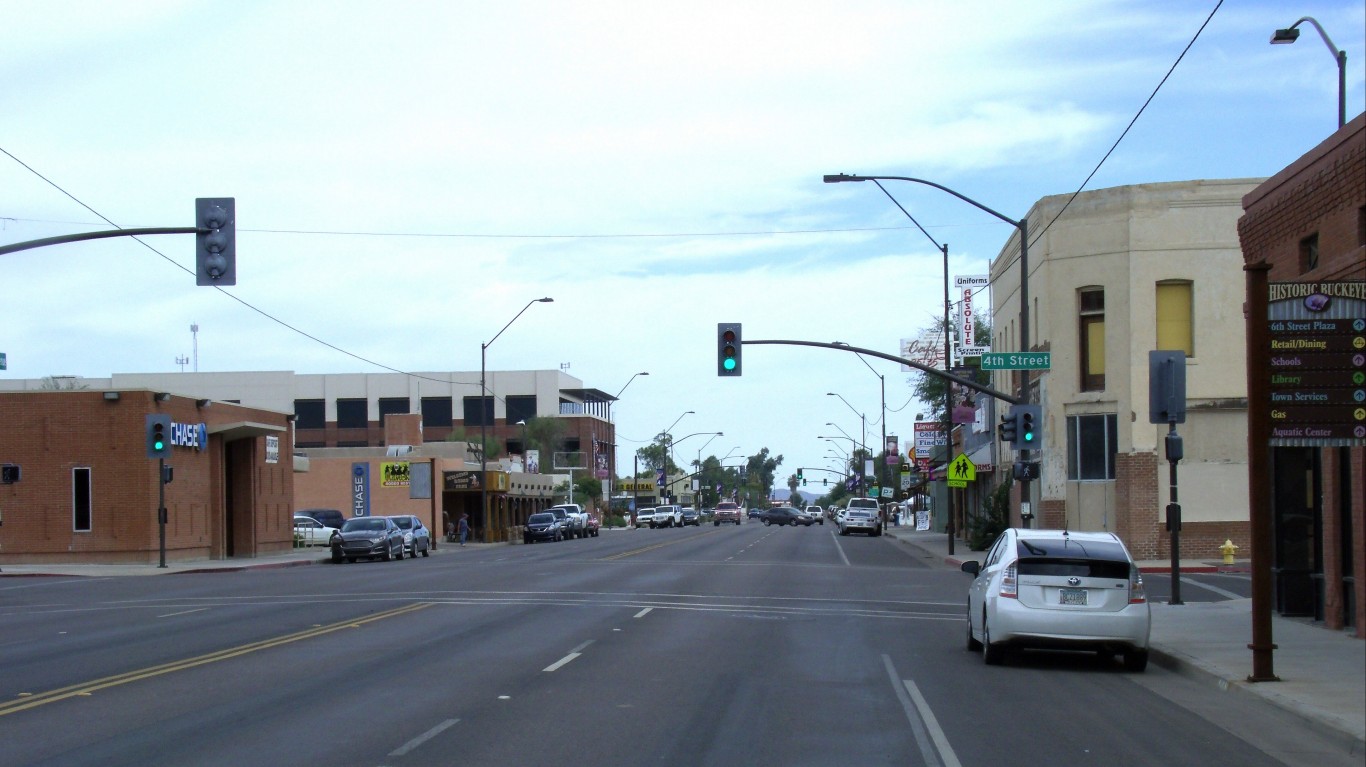
The U.S. Census Bureau has issued its new populations of cities and towns data, which covers the period that ended in the middle of last year. The report also shows how much cities grew or shrank compared to the same period of the prior year. The fastest growing city in America last year was a modest-sized one in Arizona.
The report’s authors noted that most population growth in the United States last year was in cities in the South and West. The data was based on numbers for a period that started on July 1, 2017, and ended July 1, 2018. The authors commented, “Among the 15 cities or towns with the largest numeric gains between 2017 and 2018, eight were in the South, six were in the West, and one was in the Midwest.” At the top of the list among cities with populations over 50,000, Buckeye, Arizona, grew the fastest at a rate of 8.5%, which took its population to 74,370. The city sits a few miles west of Phoenix.
Second on the list, New Braunfels, Texas, grew 7.2% to 84,612. The city sits about halfway between Austin and San Antonio. Of the 15 fastest growing cities, seven were in Texas. In addition to New Braunfels, Frisco grew by 6.1% to 188,170. McKinney grew 5.4% to 191,645, while Georgetown grew 5.2% to 74,180 and Rowlett grew 5.1% to 66,285. Midland grew by 4.4% to 142,344, and Round Rock grew 4.3% to 128,739.
The fastest growing city in terms of absolute population size sits next to Buckeye. Phoenix added 25,288 to 1,660,272. Phoenix also rated as the fifth largest city in America, according to the new data. And these are the largest cities in the country.
Two cities near New Braunfels made the list of the 15 fastest growing cities based on population. The first of these, San Antonio, grew by 20,824 to 1,532,233. San Antonio was also the seventh largest city, with a population of 1,532,233. Austin grew by 12,504 to 964,254.
Census researchers drew another conclusion from the new data: “The United States is a nation of both big cities and small towns. While only 4.0% (775) of all cities had a population of 50,000 or more in 2018, collectively they contained 127.1 million people — nearly 39 percent of the U.S. population. On the other hand, of the 19,495 incorporated places in the United States, around 76% (14,768) had fewer than 5,000 people.”
Based on that data, Buckeye falls somewhere in the middle based on size, but no city could match it for growth. Nation-leading population growth in Buckeye is a break from the regional trend, as the broader Phoenix metro area does not even rank among America’s 25 fastest growing cities.
The 15 Fastest-Growing Large Cities Between July 1, 2017, and July 1, 2018, With Populations of 50,000 or More on July 1, 2017
| Rank | Area | State | Increase | 2018 Population |
|---|---|---|---|---|
| 1 | Buckeye city | Arizona | 8.5% | 74,370 |
| 2 | New Braunfels city | Texas | 7.2% | 84,612 |
| 3 | Apex town | North Carolina | 6.8% | 53,852 |
| 4 | Frisco city | Texas | 6.1% | 188,170 |
| 5 | Meridian city | Idaho | 6.1% | 106,804 |
| 6 | McKinney city | Texas | 5.4% | 191,645 |
| 7 | Georgetown city | Texas | 5.2% | 74,180 |
| 8 | Rowlett city | Texas | 5.1% | 66,285 |
| 9 | St. Cloud city | Florida | 5.0% | 54,115 |
| 10 | Ankeny city | Iowa | 4.6% | 65,284 |
| 11 | Dublin city | California | 4.5% | 63,445 |
| 12 | South Jordan city | Utah | 4.4% | 74,149 |
| 13 | Midland city | Texas | 4.4% | 142,344 |
| 14 | Castle Rock town | Colorado | 4.3% | 64,827 |
| 15 | Round Rock city | Texas | 4.3% | 128,739 |
Source: U.S. Census Bureau
In 20 Years, I Haven’t Seen A Cash Back Card This Good
After two decades of reviewing financial products I haven’t seen anything like this. Credit card companies are at war, handing out free rewards and benefits to win the best customers.
A good cash back card can be worth thousands of dollars a year in free money, not to mention other perks like travel, insurance, and access to fancy lounges.
Our top pick today pays up to 5% cash back, a $200 bonus on top, and $0 annual fee. Click here to apply before they stop offering rewards this generous.
Flywheel Publishing has partnered with CardRatings for our coverage of credit card products. Flywheel Publishing and CardRatings may receive a commission from card issuers.
Thank you for reading! Have some feedback for us?
Contact the 24/7 Wall St. editorial team.


